This series aims primarily at the publication of constructive Hindu theological, philosophical and ethical projects aimed at bringing Hindu traditions into dialogue with contemporary trends both in scholarship and society. The series invites original, high quality, research level work on religion, culture, and society concerning Hindus living in India and abroad.
Since 2004 the OCHS has produced up to three volumes per year in the OCHS Routledge Hindu Studies Series.
Marco Ferrante
2020
This book examines the theory of consciousness developed by the school of Recognition, an Indian philosophical tradition that thrived around the tenth c. CE in Kashmir, and argues that consciousness has a linguistic nature. It situates the doctrines of the tradition within the broader Indian philosophical context and establishes connections with the contemporary analytic debate.
The book focuses on Utpaladeva and Abhinavagupta (tenth c. CE), two Hindu intellectuals belonging to the school of Recognition, Pratyabhijñā in Sanskrit. It argues that these authors promoted ideas that bear a strong resemblance with contemporary ‘higher–order theories’ of consciousness. In addition, the book explores the relationship between the thinkers of the school of Recognition and the thought of the grammarian/philosopher Bhartṛhari (fifth c. CE). The book bridges a gap that still exists between scholars engaged with Western traditions and Sanskrit specialists focused on textual materials. In doing so, the author uses concepts from contemporary philosophy of mind to illustrate the Indian arguments and an interdisciplinary approach with abundant reference to the original sources.
Offering fresh information to historians of Indian thought, the book will also be of interest to academics working on Non-Western Philosophy, Comparative Philosophy, Indian Philosophy, Religion, Hinduism, Tantric Studies and South Asian Studies.
The book can be purchased here:
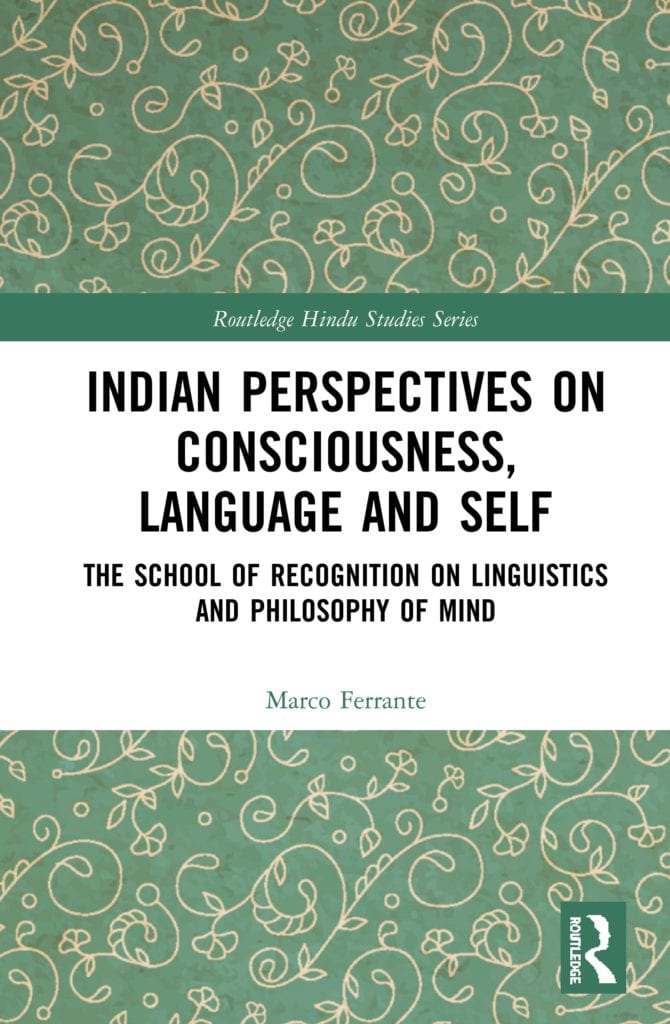
Ferdinando Sardella, Lucian Wong
2020
This book offers a focused examination of the Bengali Vaiṣṇava tradition in its manifold forms in the pivotal context of British colonialism in South Asia.
Bringing together scholars from across the disciplines of social and intellectual history, philology, theology, and anthropology to systematically investigate Vaiṣṇavism in colonial Bengal, this book highlights the significant roles—religious, social, and cultural—that a prominent Hindu devotional current played in the lives of wide and diverse sections of colonial Bengali society. Not only does the book thereby enrich our understanding of the history and development of Bengali Vaiṣṇavism, but it also sheds valuable new light on the texture and dynamics of colonial Hinduism beyond the discursive and social-historical parameters of an entrenched Hindu “Renaissance” paradigm.
A landmark in the burgeoning field of Bengali Vaiṣṇava studies, this book will be of interest to scholars of modern Hinduism, religion, and colonial South Asian social and intellectual history.
The book can be purchased here:
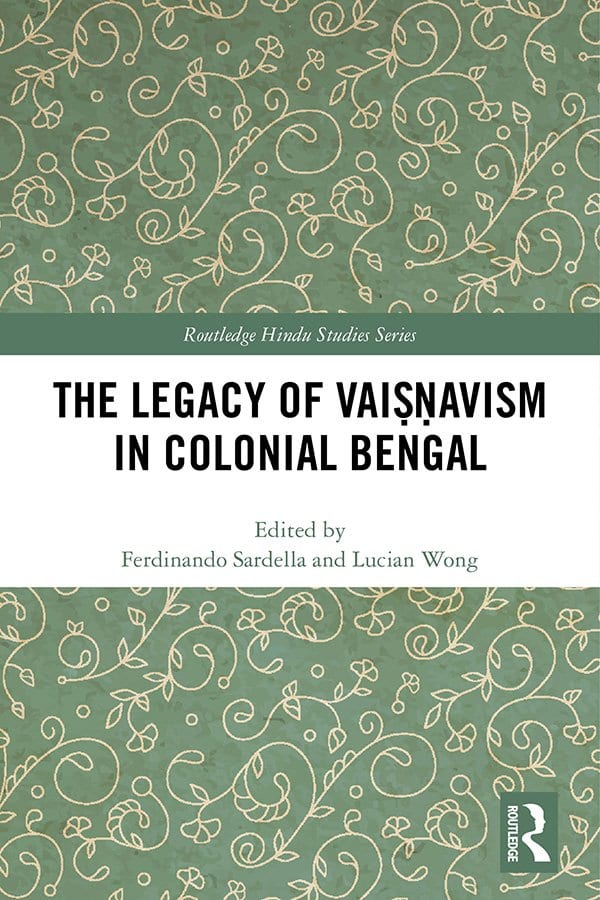
Ionut Moise
2019
This book offers a comprehensive description of the ‘doctrine of salvation’ (niḥśreyasa/ mokṣa) and Vaiśeṣika, one of the oldest philosophical systems of Indian philosophy and provides an overview of theories in other related Indian philosophical systems and classical doctrines of salvation.
The book examines liberation, the fourth goal of life and arguably one of the most important topics in Indian philosophy, from a comparative philosophical perspective. Contextualising classical Greek Philosophy which contains the three goals of life (Aristotle’s Ethics), and explains salvation as first understood in the theology of the Hellenistic and Patristics periods, the author analyses six classical philosophical schools of Indian philosophy in which there is a marked emphasis on the ultimate ontological elements of the world and ‘self’. Analysing Vaiśeṣika and the manner in which this lesser known system has put forward its own theory of salvation (niḥśreyasa), the author demonstrates its significance and originality as an old and influential philosophical system. He argues that it is essential for the study of other Indian sciences and for the study of all comparative philosophy.□
An extensive introduction to Indian soteriology, this book will be an important reference work for academics interested in comparative religion and philosophy, Indian philosophy, Asian religion and South Asian Studies.
The book can be purchased here:
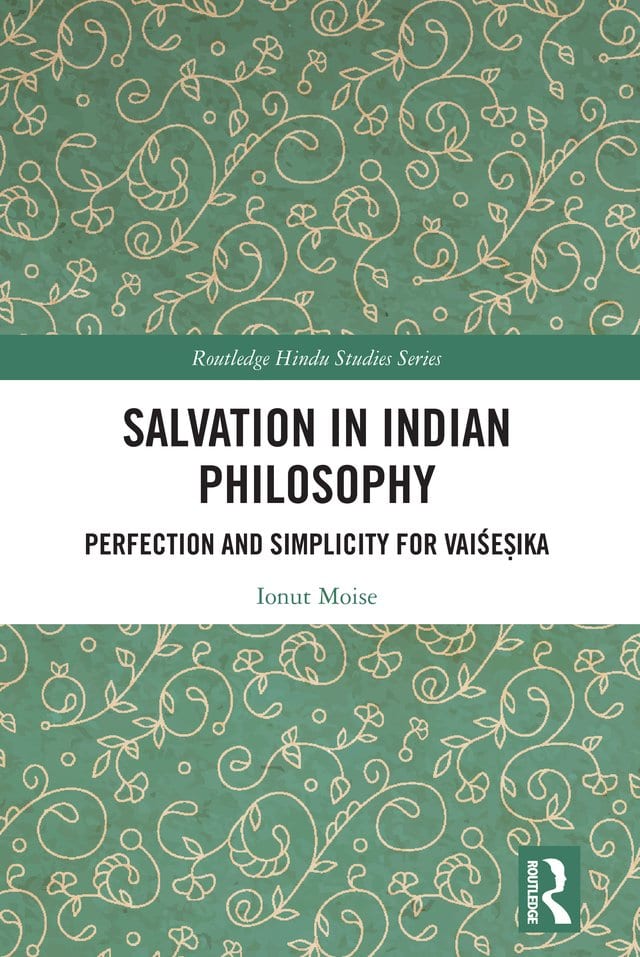
Samuel G. Ngaihte
2019
Drawing on insights from Indian intellectual tradition, this book examines the conception of dharma by Jaimini in his Mīmāṃsāsūtras, assessing its contemporary relevance, particularly within ritual scholarship.
Presenting a hermeneutical re-reading of the text, it investigates the theme of the relationship between subjectivity and tradition in the discussion of dharma, bringing it into conversation with contemporary discourses on ritual. The primary argument offered is that Jaimini’s conception of dharma can be read as a philosophy of Vedic practice, centred on the enjoinment of the subject, whose stages of transformation possess the structure of a hermeneutic tradition.
Offering both substantive and methodological insights into the contentions within the contemporary study of ritual, this book will be of interest to researchers in the fields of Hindu studies, ritual studies, Asian religion, and South Asian studies.
The book can be purchased here:
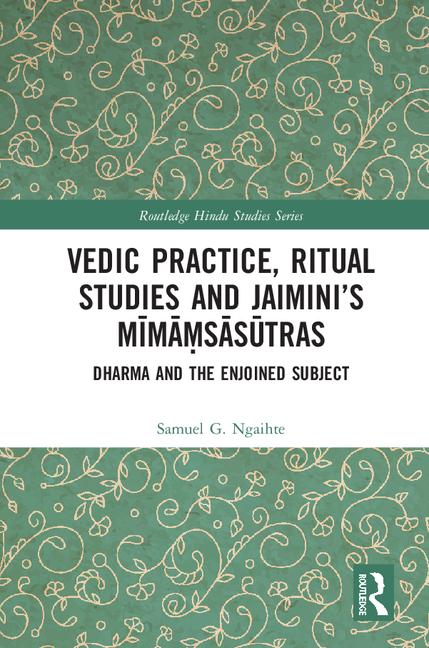
Raj Balkaran
2018
In analyzing the parallels between myths glorifying the Indian Great Goddess, Durgā, and those glorifying the Sun, Sūrya, found in the Mārkaṇḍeya Purāṇa, this book argues for an ideological ecosystem at work in the Mārkaṇḍeya Purāṇa privileging worldly values, of which Indian kings, the Goddess (Devī), the Sun (Sūrya), Manu and Mārkaṇḍeya himself are paragons.
This book features a salient discovery in Sanskrit narrative text: just as the Mārkaṇḍeya Purāṇahouses the Devī Māhātmya glorifying the supremacy of the Indian Great Goddess, Durgā, it also houses a Sūrya Māhātmya, glorifying the supremacy of the Sun, Sūrya, in much the same manner. This book argues that these māhātmyas were meaningfully and purposefully positioned in the Mārkaṇḍeya Purāṇa, while previous scholarship has considered this haphazard interpolation for sectarian aims. The book demonstrates that deliberate compositional strategies make up the Saura–Śākta symbiosis found in these mirrored māhātmyas. Moreover, the author explores what he calls the “dharmic double helix” of Brahmanism, most explicitly articulated by the structural opposition between pravṛtti (worldly) and nivṛtti (other-worldy) dharmas.
As the first narrative study of the Sūrya Māhātmya, along with the first study of the Mārkaṇḍeya Purāṇa (or any Purāṇa), as a narrative whole, this book will be of interest to academics in the field of Religion, Hindu Studies, South Asian Studies, Goddess Studies, Narrative Theory and Comparative Mythology.
The book can be purchased here:
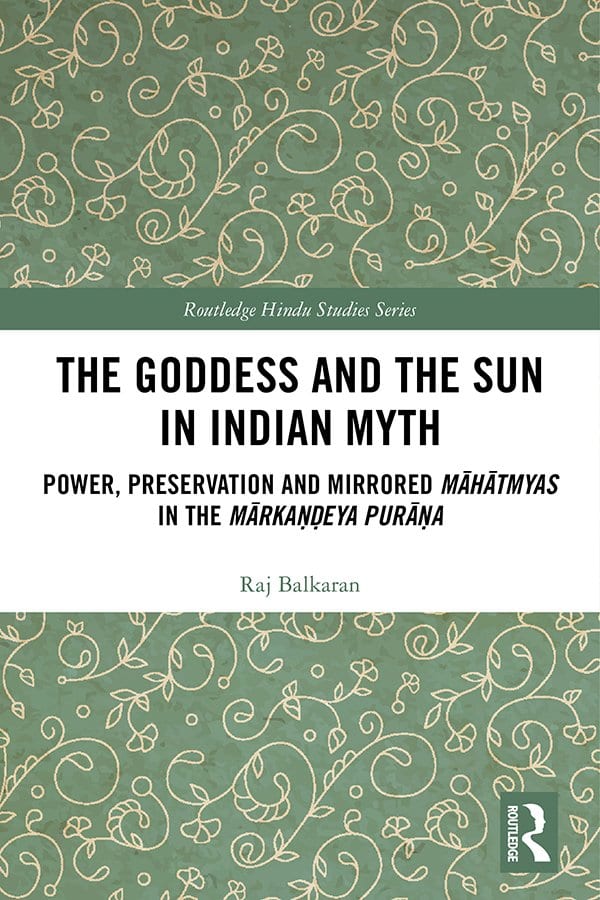
Joseph T. O’Connell, Rembert Lutjeharms
2018
Within the broad Hindu religious tradition, there have been for millennia many subtraditions generically called Vaiṣṇava, who insist that the most appropriate mode of religious faith and experience is bhakti, or devotion, to the supreme personal deity, Viṣṇu. Caitanya Vaiṣṇavas are a community of Vaiṣṇava devotees who coalesced around Kṛṣṇa Caitanya (1486–1533), who taught devotion to the name and form of Kṛṣṇa, especially in conjunction with his divine consort Rādhā and who also came to be looked upon by many as Kṛṣṇa himself who had graciously chosen to be born in Bengal to exemplify the ideal mode of loving devotion (prema-bhakti).
This book focusses on the relationship between the ‘transcendent’ intentionality of religious faith of human beings and their ‘mundane’ socio-cultural ways of living, through a detailed study of the social implications of the Caitanya Vaiṣṇava devotional Hindu tradition in pre-colonial and colonial Bengal. Structured in two parts, the first analyzes the articulation of Kṛṣṇa-bhakti within the broad Hindu sector of Bengali society. The second section examines Hindu–Muslim relationships in Bengal from the particular vantage point of the Caitanya Vaiṣṇava tradition, and in which the subtle influence of Kṛṣṇa-bhakti, it is argued, may be detected. In both sections, the bulk of attention is given to the sixteenth and seventeenth centuries, when Bengal was under independent Sultanate or emergent Mughal rule and thus free of the impact of British and European colonial influence.
Arguing that the Caitanya Vaiṣṇava devotion contributed to the softening of the potentially alienating socio-cultural divisions of class, caste, sect and religio-political community in Bengal, this book will be of interest to academics in the field of Asian Religion and Hinduism, in particular devotional Hinduism, both premodern and modern, as well as to scholars and students of South Asian social history, Hindu-Muslim relations, and Bengali religious culture.
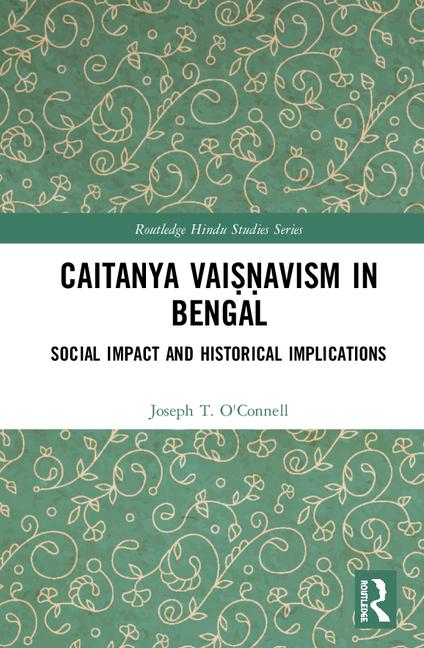
Daniela Bevilacqua
2018
Modern Hindu Traditionalism addresses Hindu traditions that resisted contact with both Neo-Hindu thought and views of “classical” Hinduism perceived to be outmoded.
This book provides an in-depth understanding of Modern Hindu Traditionalism through the case study of the Rāmānandī order (sampradāya) and the portrait of the Jagadguru Rāmānandācārya Rāmnareśācārya. This guru belongs to the ancient tradition of the Rāmānandī order, which is active at the present time and the biggest Vaiṣṇava religious order in Northern India. Analyzing the historical evolution of the Rāmānandī order, the author shows how different centers have undergone different changes over the centuries, and focuses on the independence struggle of a group of Rāmānandīs from the Rāmānūjīs, which led to the creation of the role of Jagadguru Rāmānandācārya and the construction of the Śrī Maṭh. Drawing on extensive fieldwork, this book casts light on figures and processes central to the development of Hinduism in the twentieth and twenty-first century and consequently describes the role of religion in contemporary Indian society. The author examines the role religious institutions and their leaders have in the everyday life of individuals, how they interact with and in the society, and how they approach and interpret social and political issues. The Rāmānandīs’ use of new methods of communication, in particular social media, is an innovative part of the study.
A welcome innovation in the studies of South Asian religion, this book will be of interest to historians, anthropologists, and scholars of Hinduism and religion and politics.
The book can be purchased here:
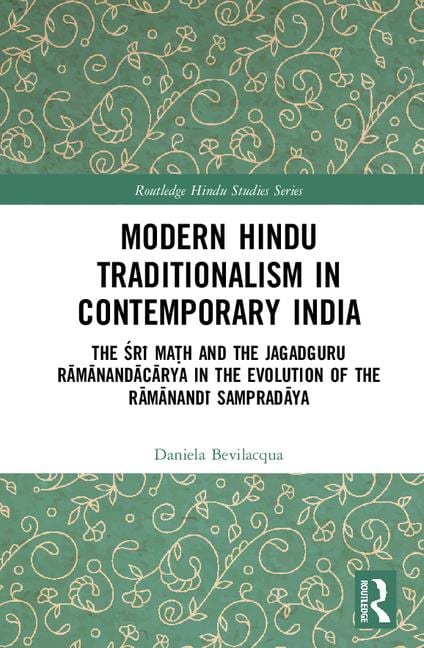
R.U.S. Prasad
2017
Sarasvati assumes different roles, a physical river and a river goddess, then as a goddess of speech and finally that of a goddess of learning, knowledge, arts and music. References to Sarasvati in the Vedas and the Brahmanas, the Mahabharata and the Puranas and her marked presence in other religious orders, such as Buddhism, Jainism and the Japanese religion, form the basis of discussion as regards her various attributes and manifestations. In Jainism, her counter-part is Sutra-devi, in Buddhism it is Manjusri and Prajnaparamita and in the Japanese religion, Benten is the representative goddess. The physical presence of Sarasvati in various iconic forms is seen in Nepal, Tibet and Japan. Tantrism associated with Sarasvati also finds reflection in these religious traditions. Sculptors and art historians take delight in interpreting various symbols her iconic forms represent.
The book examines Sarasvati’s origin, the course of her flow and the place of her disappearance in a holistic manner. Based on a close analysis of texts from the early Rig-Veda to the Brahmanas and the Puranas, it discusses different view-points in a balanced perspective and attempts to drive the discussions towards the emergence of a consensus view. The author delineates the various phases of Sarasvati’s evolution to establish her unique status and emphasise her continued relevance in the Hindu tradition. The book argues that the practice of pilgrimage further evolved after its association with the river Sarasvati who was perceived as divinity personified in Hindu tradition. This, in turn, led to the emergence of numerous pilgrimage sites on or near her banks which attracted a large number of pilgrims.
A multifaceted and interdisciplinary analysis of a Hindu goddess, this book will be of interest to academics researching South Asian Religion, Hinduism and Indian Philosophy as also the general readers.
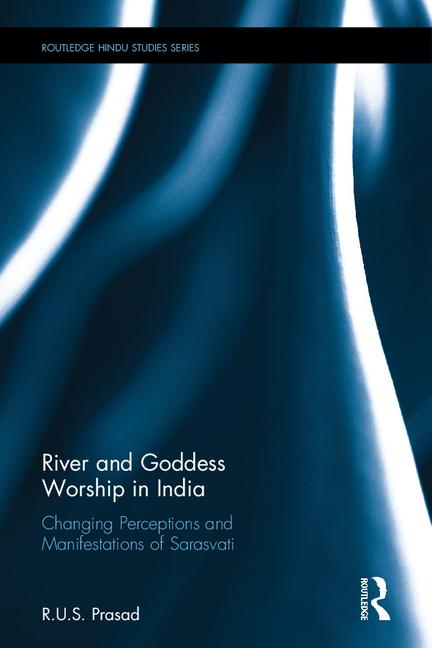
Francis X. Clooney
2017
The field of Hindu-Christian studies revives theology as a particularly useful interreligious discipline. Though a sub-division of the broader Hindu-Christian dialogue, it is also a distinct field of study, proper to a smaller group of religious intellectuals. At its best it envisions a two-sided, mutual conversation, grounded in scholars’ knowledge of their own tradition and of the other.
Based on the Westcott-Teape Lectures given in India and at the University of Cambridge, this book explores the possibilities and problems attendant upon the field of Hindu-Christian Studies, the reasons for occasional flourishing and decline in such studies, and the fragile conditions under which the field can flourish in the 21st century. The chapters examine key instances of Christian–Hindu learning, highlighting the Jesuit engagement with Hinduism, the modern Hindu reception of Western thought, and certain advances in the study of religion that enhance intellectual cooperation.
This book is a significant contribution to a sophisticated understanding of Christianity and Hinduism in relation. It presents a robust defense of comparative theology and of Hindu-Christian Studies as a necessarily theological discipline. It will be of wide interest in the fields of Religious Studies, Theology, Christianity and Hindu Studies.
The book can be purchased here:
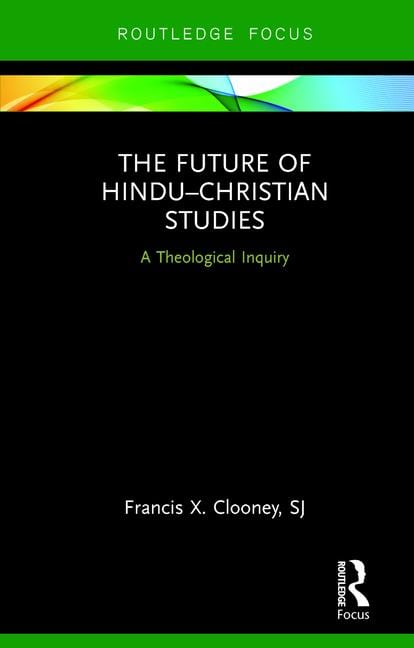
Brainerd Prince
2017
Sri Aurobindo was an Indian nationalist, philosopher, yogi, guru, and poet. This book is an enquiry into the integral philosophy of Aurobindo and its contemporary relevance. It offers a reading of Aurobindo’s key texts by bringing them into conversation with religious studies and the hermeneutical traditions. The central argument is that Aurobindo’s integral philosophy is best understood as a hermeneutical philosophy of religion.
Such an understanding of Aurobindo’s philosophy, offering both substantive and methodological insights for the academic study of religion, subdivides into three interrelated aims. The first is to demonstrate that the power of the Aurobindonian vision lies in its self-conception as a traditionary-hermeneutical enquiry into religion; the second, to draw substantive insights from Aurobindo’s enquiry to envision a way beyond the impasse within the current religious-secular debate in the academic study of religion. Working out of the condition of secularism, the dominant secularists demand the abandonment of the category ‘religion’ and the dismantling of the academic discipline of religious studies. Aurobindo’s integral work on ‘religion’, arising out of the Vedānta tradition, critiques the condition of secularity that undergirds the religious-secular debate. Finally, informed by the hermeneutical tradition and building on the methodological insights from Aurobindo’s integral method, the book explores a hermeneutical approach for the study of religion which is dialogical in nature.
This book will be of interest to academics studying Religious Studies, Philosophy of Religion, Continental Hermeneutics, Modern India, Modern Hinduism as well as South Asian Studies.
The book can be purchased here:
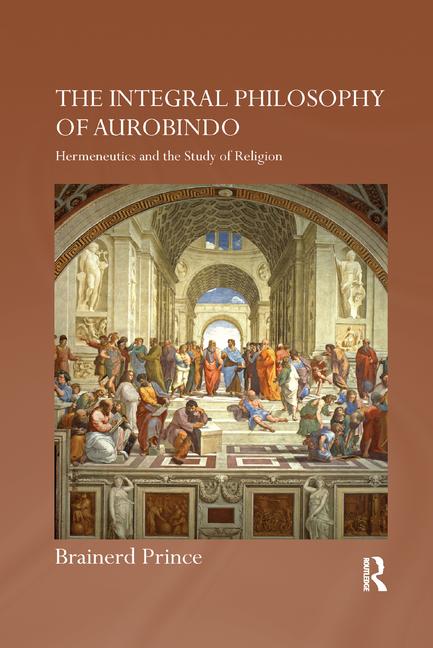
Julius J. Lipner
2017
Hinduism comprises perhaps the major cluster of religio-cultural traditions of India, and it can play a valuable role in helping us understand the nature of religion and human responses to life. Hindu image-worship lies at the core of what counts for Hinduism – up-front and subject to much curiosity and misunderstanding, yet it is a defining feature of this phenomenon.
This book focuses on Hindu images and their worship with special reference to Vaiṣṇavism, a major strand of Hinduism. Concentrating largely, but not exclusively, on Sanskritic source material, the author shows in the course of the book that Hindu image-worship may be understood via three levels of interpretation: the metaphysical/theological, the narratival or mythic, and the performative or ritual. Analysing the chief philosophical paradigm underlying Hindu image-worship and its implications, the book exemplifies its widespread application and tackles, among other topics such as the origins of image-worship in Hinduism, the transition from Vedic to image worship, a distinguishing feature of Hindu images: their multiple heads and limbs. Finally, with a view to laying the grounds for a more positive dialogic relationship between Hinduism and the “Abrahamic” faiths, which tend to condemn Hindu image-worship as “idolatry”, the author examines the theological explanation and justification for embodiment of the Deity in Hinduism and discusses how Hinduism might justify itself against such a charge.
Rich in Indological detail, and with an impressive grasp of the philosophical and theological issues underlying Hindu material culture, and image-worship, this book will be of interest to academics and others studying theology, Indian philosophy and Hinduism.
The book can be purchased here:
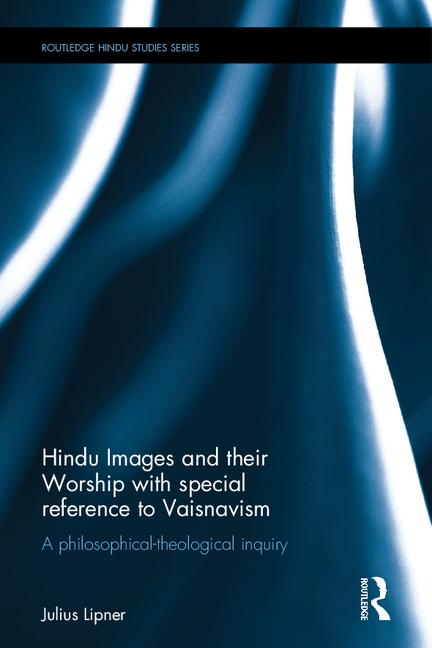
Alf Hiltebeitel
2016
In Indian mythological texts like the Mahābhārata and Rāmāyaṇa, there are recurrent tales about gleaners. The practice of “gleaning” in India had more to do with the house-less forest life than with residential village or urban life or with gathering residual post-harvest grains from cultivated fields. Gleaning can be seen a metaphor for the Mahābhārata poets’ art: an art that could have included their manner of gleaning what they made the leftovers (what they found useful) from many preexistent texts into Vyāsa’s “entire thought”—including oral texts and possibly written ones, such as philosophical debates and stories.
This book explores the notion of non-violence in the epic Mahābhārata. In examining gleaning as an ecological and spiritual philosophy nurtured as much by hospitality codes as by eating practices, the author analyses the merits and limitations of the 9th century Kashmiri aesthetician Anandavardhana that the dominant aesthetic sentiment or rasa of the Mahābhārata is shanta (peace). Mahatma Gandhi’s non-violent reading of the Mahabharata via the Bhagavad Gita are also studied.
This book by one of the leaders in Mahābhārata studies is of interest to scholars of South Asian Literary Studies, Religious Studies as well as Peace Studies, South Asian Anthropology and History.
The book can be purchased here:
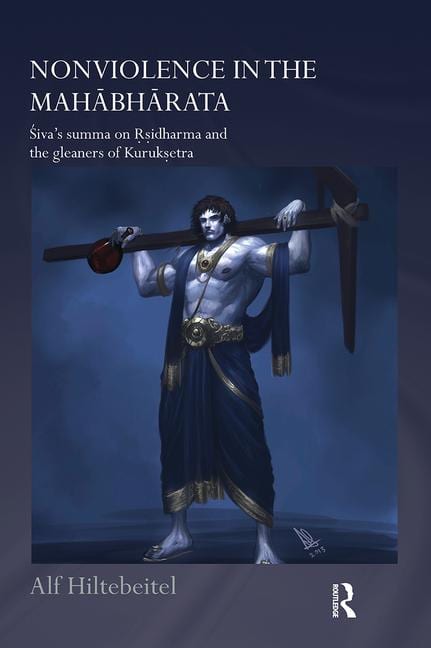
John Brockington, Mary Brockington
2016
This book is the first to present current scholarship on gender and in regional and sectarian versions of the Rāmāyaṇa. Contributors explore in what ways the versions relate to other Rāmāyaṇa texts as they deal with the female persona and the cultural values implicit in them. Using a wide variety of approaches, both analytical and descriptive, the authors discover common ground between narrative variants even as their diversity is recognized.
It offers an analysis in the shaping of the heterogeneous Rāma tradition through time as it can be viewed from the perspective of narrating women’s lives. Through the analysis of the representation and treatment of female characters, narrative inventions, structural design, textual variants, and the idiom of composition and technique in art and sculpture are revealed and it is shown what and in which way these alternative versions are unique.
A sophisticated exploration of the Rāmāyaṇa, this book is of great interest to academics in the fields of South Asian Studies, Asian Religion, Asian Gender and Cultural Studies.
The book can be purchased here:
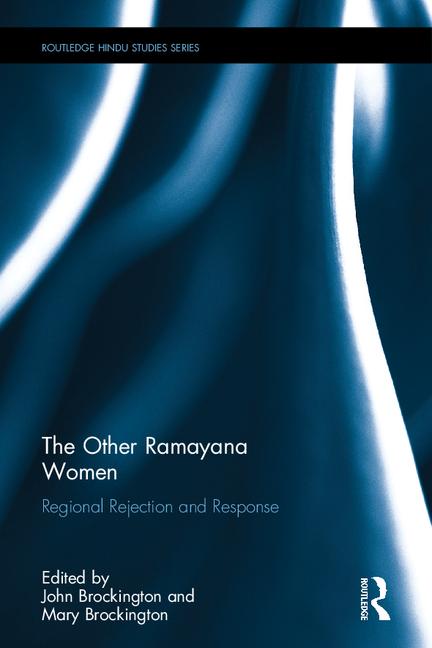
Sucharita Adluri
2015
Theistic Vedānta originated with Rāmānuja (1077-1157), who was one of the foremost theologians of Viśistādvaita Vedānta and also an initiate of the Śrīvaisnava sectarian tradition in South India. As devotees of the God Visnu and his consort Śrī, the Śrīvaisnavas established themselves through various processes of legitimation as a powerful sectarian tradition. One of the processes by which the authority of the Śrīvaisnavas was consolidated was Rāmānuja’s synthesis of popular Hindu devotionalism with the philosophy of Vedānta.
This book demonstrates that by incorporating a text often thought to be of secondary importance – the Visnu Purāna (1st-4th CE) – into his reading of the Upanisads, which were the standard of orthodoxy for Vedānta philosophy, Rāmānuja was able to interpret Vedānta within the theistic context of Śrīvaisnavism. Rāmānuja was the first Brahmin thinker to incorporate devotional purānas into Vedānta philosophy. His synthetic theology called Viśistādvaita (unity-of-the-differenced) wielded tremendous influence over the expansion of Visnu devotionalism in South India and beyond. In this book, the exploration of the exegetical function of this purana in arguments salient to Rāmānuja’s Vedānta facilitates our understanding of the processes of textual accommodation and reformulation that allow the incorporation of divergent doctrinal claims.
Expanding on and reassessing current views on Rāmānuja’s theology, the book contributes new insights to broader issues in religious studies such as canon expansion, commentarial interpretation, tradition-building, and the comparative study of scripture. It will be of interest to students and scholars of Indian philosophy and Religious Studies.
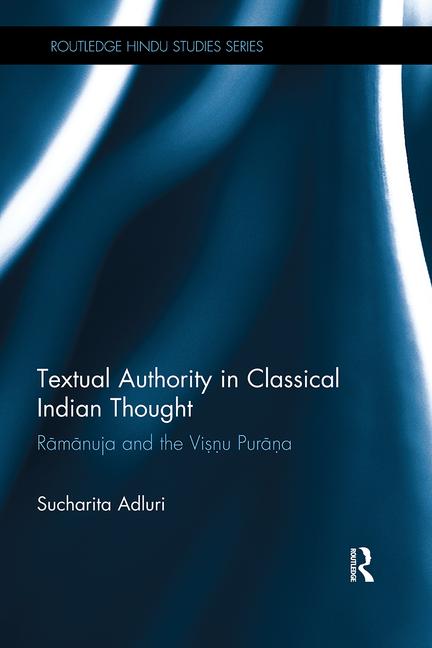
Ankur Barua
2015
Hindu and Christian debates over the meanings, motivations, and modalities of ‘conversion’ provide the central connecting theme running through this book. It focuses on the reasons offered by both sides to defend or oppose the possibility of these cross-border movements, and shows how these reasons form part of a wider constellation of ideas, concepts, and practices of the Christian and the Hindu worlds.
The book draws upon several historical case-studies of Christian missionaries and of Hindus who encountered these missionaries. By analysing some of the complex negotiations, intersections, and conflicts between Hindus and Christians over the question of ‘conversion’, it demonstrates that these encounters revolve around three main contested themes. Firstly, who can properly ‘speak for the convert’? Secondly, how is ‘tolerating’ the religious other connected to an appraisal of the other’s viewpoints which may be held to be incorrect, inadequate, or incomplete? Finally, what is, in fact, the ‘true Religion’? The book demonstrates that it is necessary to wrestle with these questions for an adequate understanding of the Hindu and Christian debates over ‘conversion.’
Questioning what ‘conversion’ precisely is, and why it has been such a volatile issue on India’s political-legal landscape, the book will be a useful contribution to studies of Hinduism, Christianity and Asian Religion and Philosophy.
The book can be purchased here:
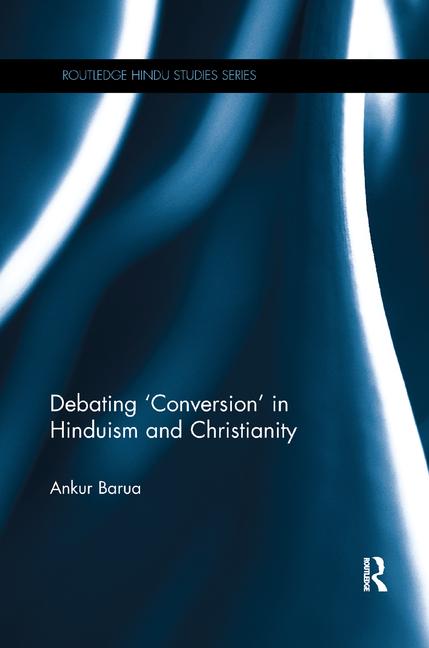
Martin Ganeri
2015
This book is a study of the Vedanta of Ramanuja, in particular his concept of Brahman and of Brahman’s relationship with the world. It is also a critique of modern Western and Indian interpretation of Ramanuja’s work. Placing emphasis on Ramanuja’s account of Western theistic thought, it argues for a major rethinking of what kind of account is offered and for a reversal of the tendencies of earlier interpretations.
Modern Western and India studies of Ramanuja have drawn parallels with Western theistic accounts or used Western concepts to describe his thought. The author puts forward that fundamental points of convergence with classical Western theism and fundamental divergences from non-classical forms can be identified, thus reversing the tendency of earlier interpretation. It examines in detail the general comparisons that have been made and the various terms used, addressing the neglect of classical Western theism and of its relationship to Indian thought by Western and Indian scholars and furthers the proper appreciation of Ramanuja as a great Vedantic teacher.
The book can be purchased here:
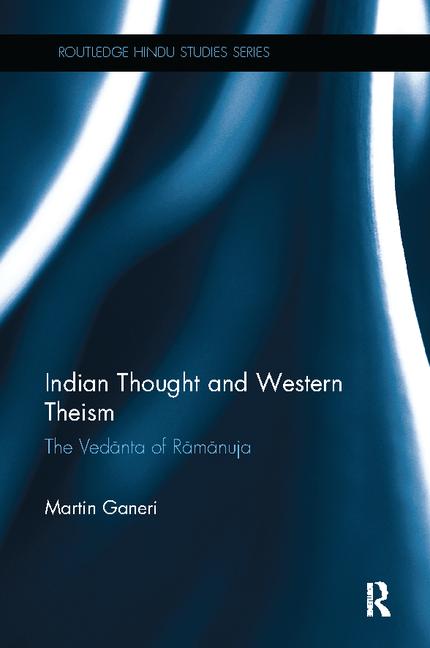
Knut A. Jacobsen
2015
This book will is the first comprehensive study on sacred space and pilgrimage in the Hindu tradition, providing a detailed presentation of this phenomenon. In no other religion is sacred space and pilgrimage of such importance. Focusing on historical, sociological and environmental questions about the phenomenon of sacred space and pilgrimage in Hinduism, the author analyzes how power of place and pilgrimage became a central feature of Hinduism. He examines the meaning of the phenomenon in history and in contemporary India. Arguing that salvific power of place became a major dimension of Hinduism through a development in several stages, the book thus analyzes the historical process of how sacred space and pilgrimage in the Hindu tradition developed. Drawing on main sources such as inscriptions, Mahabharata, the Puranas, the medieval digests on sacred places (tirthas), a number of contemporary Sthalapuranas and Mahatmyas praising the sacred places as well as secondary sources, the book is also enriched by original data from the author’s fieldwork. Case studies of some of the main Hindu pilgrimage places, their characteristics and their place in the pilgrimage system provide additional information.
The book can be purchased here:
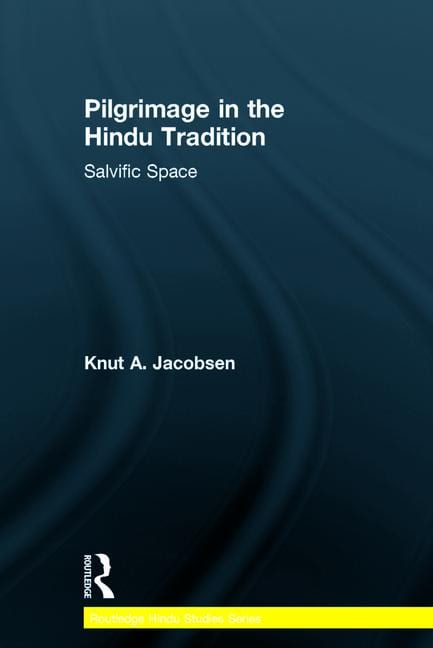
Barbara A Holdrege
2015
This book explores the connections between bhakti and embodiment and is concerned more specifically with constructions of divine bodies and devotional bodies in Krishna bhakti traditions. Grounding general reflections on bhakti and embodiment in an analysis of two case studies: the Bhagavata Purana, one of the most important scriptures in the Vaisnava bhakti canon, and the Gaudiya Vaisnava tradition, an important bhakti movement inspired by the Bengali leader Caitanya in the sixteenth century that invokes the canonical authority of the Bhagavata Purana as the basis for its own distinctive teachings.
The book can be purchased here:
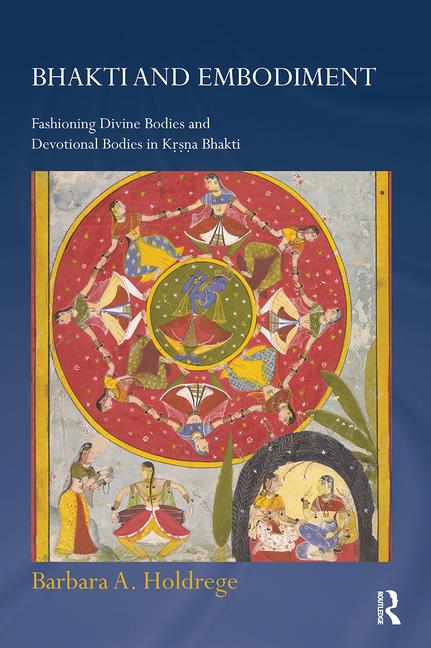
Ajay K. Rao
2015
The Rāmāyana of Vālmīki is considered by many contemporary Hindus to be a foundational religious text. But this understanding is in part the result of a transformation of the epic’s receptive history, a hermeneutic project which challenged one characterization of the genre of the text, as a work of literary culture, and replaced it with another, as a work of remembered tradition.
This book examines Rāmāyana commentaries, poetic retellings, and praise-poems produced by intellectuals within the Śrīvaisnava order of South India from 1250 to 1600 and shows how these intellectuals reconceptualized Rāma’s story through the lens of their devotional metaphysics. Śrīvaisnavas applied innovative interpretive techniques to the Rāmāyana, including allegorical reading, ślesa reading (reading a verse as a double entendre), and the application of vernacular performance techniques such as word play, improvisation, repetition, and novel forms of citation. The book is of interest not only to Rāmāyana specialists but also to those engaged with Indian intellectual history, literary studies, and the history of religions.
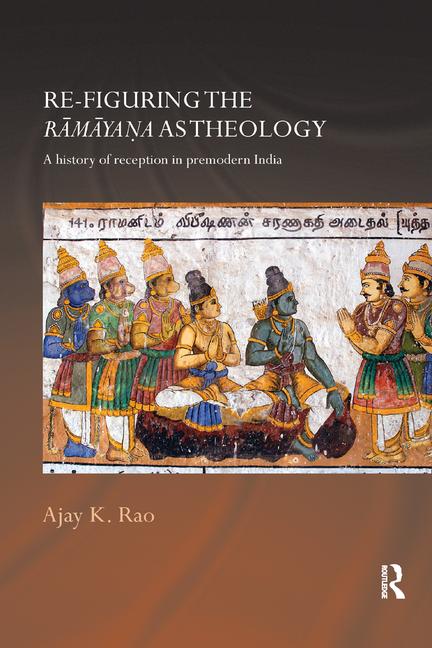
Prabhavati C. Reddy
2014
In recent years, changes in religious studies in general and the study of Hinduism in particular have drawn more scholarly attention to other forms of the Hindu faith that are concretely embodied in temples, icons, artworks, rituals, and pilgrimage practices. This book analyses the phenomenon of pilgrimage as a religious practice and experience and examines Shrî Shailam, a renowned south Indian pilgrimage site of Shiva and Goddess Durga. In doing so, it investigates two dimensions: the worldview of a place that is of utmost sanctity for Hindu pilgrims and its historical evolution from medieval to modern times.
Reddy blends religion, anthropology, art history and politics into one interdisciplinary exploration of how Shrî Shailam became the epicentre for Shaivism. Through this approach, the book examines Shrî Shailam’s influence on pan-Indian religious practices; the amalgamation of Brahmanical and regional traditions; and the intersection of the ideological and the civic worlds with respect to the management of pilgrimage centre in modern times.
This book is the first thorough study of Shrî Shailam and brings together phenomenological and historical study to provide a comprehensive understanding of both the religious dimension and the historical development of the social organization of the pilgrimage place. As such, it will be of interest to students of Hinduism, Pilgrimage and South Asian Studies.
The book can be purchased here:
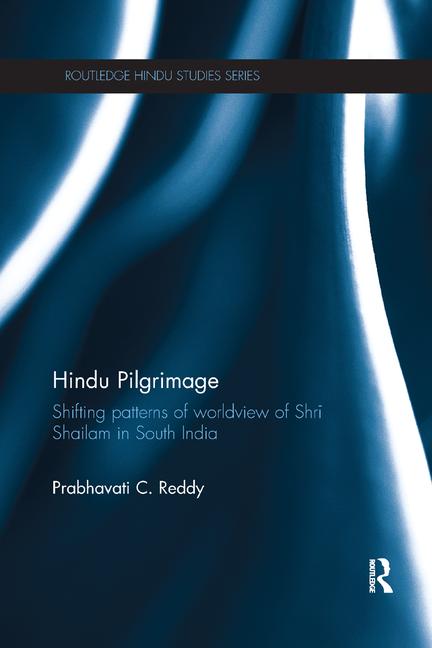
Makarand R. Paranjape
2014
Who is responsible for the Mahatma’s death? Just one single, but determined, fanatic, the whole ideology of Hindu nationalism, the ruling Congress-led government whichfailed to protect him, or a vast majority of Indians and their descendants who considered Gandhi irrelevant? Such questions mean that Gandhi, even after his tragic and brutal death, continues to haunt India – perhaps more effectively in his afterlife than when he was alive.
The Death and Afterlife of Mahatma Gandhi is a groundbreaking and profound analysis of the assassination of the ‘father of the nation’ and its after-effects. Paranjape argues that such a catastrophic event during the very birth pangs of a new nation placed a huge burden of Oedipal guilt on Indians, and that this is the reason for the massive repression of the murder in India’s political psyche. The enduring influence of Gandhi is analysed, including his spectral presence in Indian cinema. The book culminates in Paranjape’s reading of Gandhi’s last six months in Delhi, where, from the very edge of the grave, he wrought what was perhaps his greatest miracle, the saving of Delhi and thus of India itself from internecine bloodshed.
This evocative and moving meditation into the meaning of the Mahatma’s death will be relevant to scholars of Indian political and cultural history, as well as those with an interest in Gandhi and contemporary India.
The book can be purchased here:
https://www.routledge.com/The-Death-and-Afterlife-of-Mahatma-Gandhi/Paranjape/p/book/9780815374015
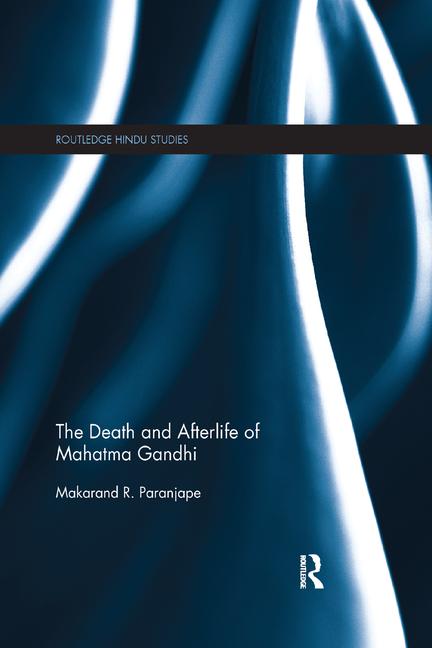
Christopher G. Framarin
2014
This book argues that the standard arguments for and against the claim that certain Hindu texts and traditions attribute direct moral standing to animals and plants are unconvincing. It presents careful, extensive, and original interpretations of passages from the Manusmrti (law), the Mahābhārata (literature), and the Yogasūtra (philosophy), and argues that these texts attribute direct moral standing to animals and plants for at least three reasons: they are sentient, they are alive, and they possess a range of other relevant attributes and abilities.
This book is of interest to scholars of Hinduism and the environment, religion and the environment, Hindu and/or Buddhist philosophy more broadly, and environmental ethics.
The book can be purchased here:
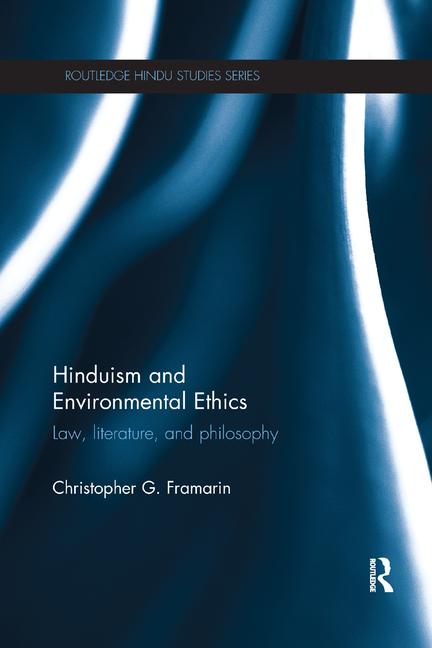
ShashiPrabha Kumar
2013
Vaisesika is one of the six systems of Hindu philosophy. It represents a pluralistic realism and is usually held to be an atomistic, metaphysical theory. This book explores the basic tenets of the Vaisesika classical school of Indian philosophy from a new perspective. It argues that it reveals an epistemological formulation of its own, which was diminished due to later developments in the history of Indian philosophical tradition.
Focusing on the principles of knowable objects and the processes of knowing as propounded by the Vaisesika school of Indian Philosophy, the book offers a fuller appreciation of the theories. Providing a balanced approach by examining earliest available material in the original sources of Vaisesika and concentrating on the epistemological pattern adopted therein, it presents an authentic and comprehensive understanding of Vaisesika concepts. This is the first introductory sourcebook in English for the authentic study of Vaisesika, and is of use to students and scholars of World Religion and Philosophy.
The book can be purchased here:
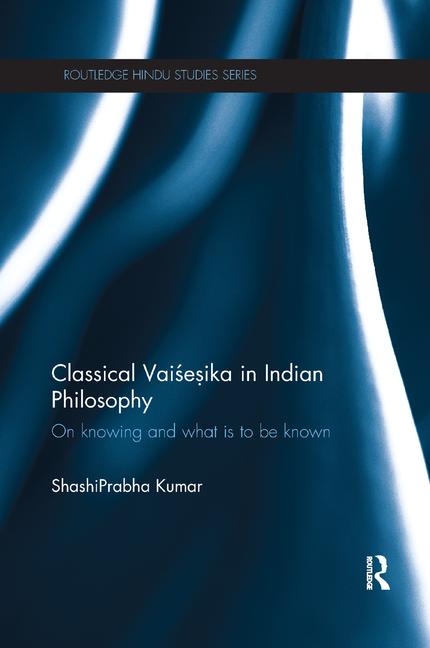
Mandakranta Bose, Sarika Priyadarshini Bose
2013
The Rāmāyana, an ancient epic of India, with audiences across vast stretches of time and geography, continues to influence numberless readers socially and morally through its many re-tellings. Made available in English for the first time, the 16th century version presented here is by Candrāvatī, a woman poet from Bengal. It is a highly individual rendition as a tale told from a woman’s point of view which, instead of celebrating masculine heroism, laments the suffering of women caught in the play of male ego.
This book presents a translation and commentary on the text, with an extensive introduction that scrutinizes its social and cultural context and correlates its literary identity with its ideological implications. Taken together, the narrative and the critical study offered here expand the understanding both of the history of women’s self-expression in India and the cultural potency of the epic tale. The book is of interest equally to students and researchers of South Asian narratives, Rāmāyana studies and gender issues.
The book can be purchased here:
https://www.routledge.com/A-Womans-Ramayana-Candravatis-Bengali-Epic/Bose-Bose/p/book/9781138575417
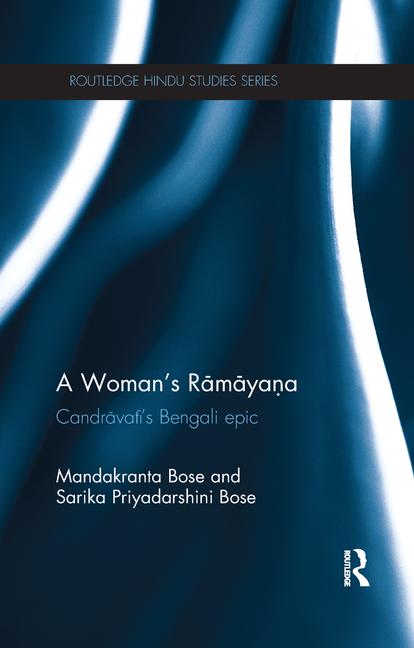
Knut A. Jacobsen
2013
Salvific space is one of the central ideas in the Hindu traditions of pilgrimage, and concerns the ability of space, especially sites associated with bodies of water such as rivers and lakes, to grant salvific rewards. Focusing on religious, historical and sociological questions about the phenomenon, this book investigates the narratives, rituals, history and structures of salvific space, and looks at how it became a central feature of Hinduism.
Arguing that salvific power of place became a major dimension of Hinduism through a development in several stages, the book analyses the historical process of how salvific space and pilgrimage in the Hindu tradition developed. It discusses how the traditions of salvific space exemplify the decentred polycentrism that defines Hinduism. The book uses original data from field research, as well as drawing on main textual sources such as Mahābhārata, the Purāṇas, the medieval digests on pilgrimage places (tīrthas), and a number of Sthalapurāṇas and Māhātmyas praising the salvific power of the place. By looking at some of the contradictions in and challenges to the tradition of Hindu salvific space in history and in contemporary India, the book is a useful study on Hinduism and South Asian Studies.
The book can be purchased here:
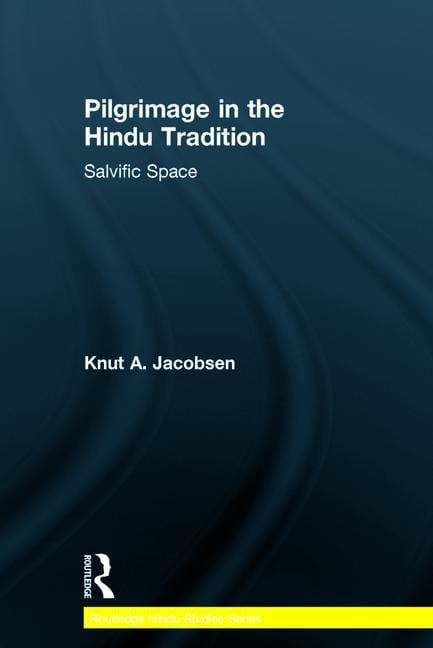
C. Mackenzie Brown
2012
This book provides new insights into the contemporary creationist-evolution debates by looking at the Hindu cultural-religious traditions of India, the Hindu Dharma traditions. Focusing on the interaction of religion and science in a Hindu context, this book offers a global context for understanding contemporary creationist-evolution conflicts and tensions utilizing a critical analysis of Hindu perspectives on these issues. The critical analysis raises broad questions regarding the frequently alleged harmony of the Hindu Dharma traditions with modern science, and with Darwinian evolution in particular.
Examining diverse elements of the Hindu Dharmic traditions that laid the groundwork for an ambivalent response to Darwinism when it first became known in India, the author highlights the significance of the colonial context. This is particularly illustrated by drawing parallels with Islamic responses to modern science and Darwinism. Analysing critically the question of compatibility between traditional Dharmic theories of knowledge and the epistemological assumptions underlying contemporary scientific methodology, the book demonstrate their implications for the alleged concord of Hinduism, the eternal Dharma, and modern science.
The book can be purchased here:
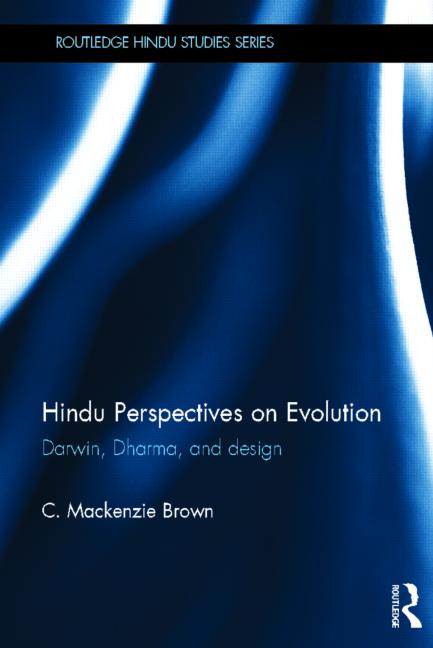
James Hegarty
2012
The Sanskrit Mahabharata is one of the greatest works of world literature and pivotal for the understanding of both Hindu traditions and wider society in ancient, medieval and modern South Asia. This book presents a new synthesis of philological, anthropological and cognitive-linguistic method and theory in relation to the study of narrative text by focusing on the form and function of the Mahabharata in the context of early South Asia.
Arguing that the combination of structural and thematic features that have helped to establish the enduring cultural centrality of religious narrative in South Asia was first outlined in the text, the book highlights the Mahabharata’s complex orientation to the cosmic, social and textual past. The book shows the extent to which narrative is integral to human social life, and more generally the creation and maintenance of religious ideologies. It highlights the contexts of origin and transmission and the cultural function of the Mahabharata in first millennium South Asia and, by extension, in medieval and modern South Asiaby drawing on both textual and epigraphic sources. The book draws attention to what is culturally specific about the origination and transmission of early South Asian narrative and what can be used to enrich our orientation to narrative in human social life more globally.
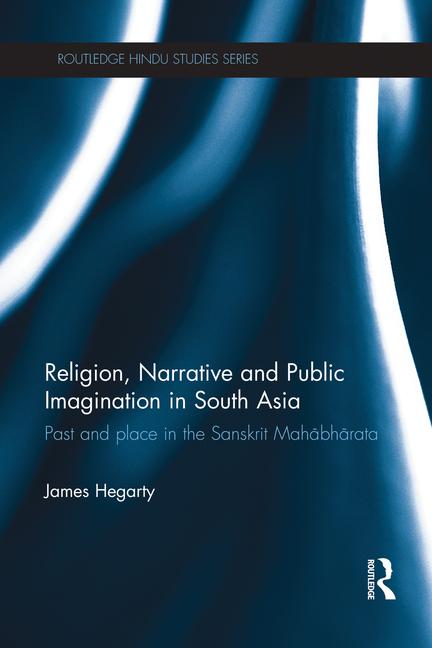
Karen Pechilis
2011
This book explores devotional religion through three interpretive gestures: The devotional subjectivity inscribed in the classical poetry of the female saint Karaikkal Ammaiyar; the domestication of her persona in an authoritative medieval hagiography; and present-day tellings of her story in ritual dramatizations. Poetry, story, and festival provide distinctive yet overlapping interpretations of the saint, revealing the selections and priorities of interpreters in the making of a living tradition.
This book is an accessible introduction to the devotional poet-saint Karaikkal Ammaiyar that will appeal to students and scholars of religion, Indian history and women’s studies.
The book can be purchased here:
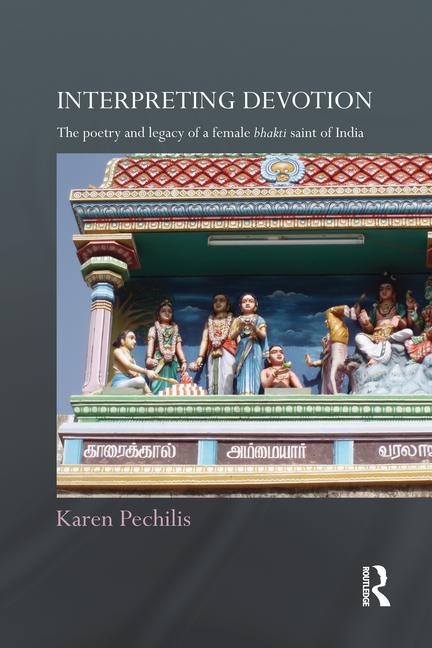
Mandakranta Bose
2010
This book accounts for the origin and evolution of the nature and roles of women within the Hindu belief system. It explains how the idea of the goddess has been derived from Hindu philosophical ideas and texts of codes of conduct and how particular models of conduct for mortal women have been created. Hindu religious culture correlates philosophical speculation and social imperatives to situate femininity on a continuum from divine to mortal existence. This creates in the Hindu consciousness multiple – often contradictory – images of women, both as wielders and subjects of authority. The conception and evolution of the major Hindu goddesses, placed against the judgments passed by texts of Hindu sacred law on women’s nature and duties, illuminate the Hindu discourse on gender, the complexity of which is compounded by the distinctive spirituality of female ascetic poets. Drawing on a wide range of Sanskrit texts, the author explains how the idea of the goddess has been derived from Hindu philosophical ideas and also from the social roles of women as reflected in, and prescribed by, texts of codes of conduct. She examines the idea of female divinity which gave rise to models of conduct for mortal women. Instead of a one-way order of ideological derivation, the author argues that there is constant traffic between both ways the notional and the actual feminine. This book brings together for the first time a wide range of material and offers fresh stimulating interpretations of women in the Hindu Tradition.
The book can be purchased here:
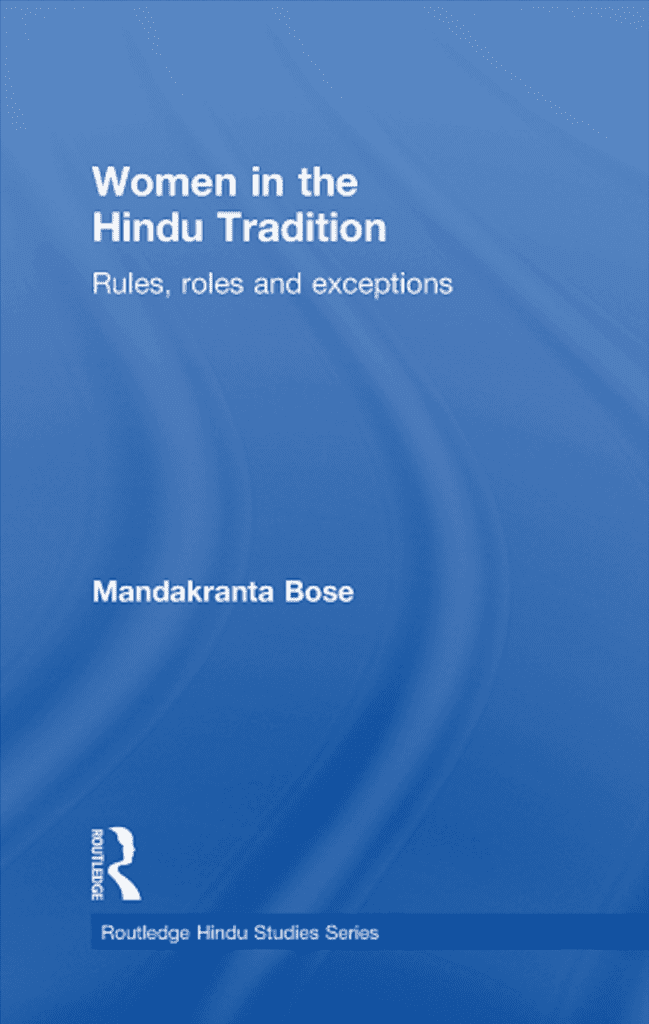
Christopher G. Framarin
2009
Desireless action is typically cited as a criterion of the liberated person in classical Indian texts. Contemporary authors argue with near unanimity that since all action is motivated by desire, desireless action is a contradiction. They conclude that desireless action is action performed without certain desires; other desires are permissible.
In this book, the author surveys the contemporary literature on desireless action and argues that the arguments for the standard interpretation are unconvincing. He translates, interprets, and evaluates passages from a number of seminal classical Sanskrit texts, and argues that the doctrine of desireless action should indeed be taken literally, as the advice to act without any desire at all. The author argues that the theories of motivation advanced in these texts are not only consistent, but plausible.
This book is the first in-depth analysis of the doctrine of desireless action in Indian philosophy. It serves as a reference to both contemporary and classical literature on the topic, and will be of interest to scholars of Indian philosophy, religion, the Bhagavadgita and Hinduism.
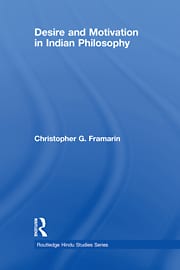
Sthaneshwar Timalsina
2008
This book focuses on the analysis of pure consciousness as found in Advaita Vedanta, one of the main schools of Indian philosophy. According to this tradition, reality is identified as Brahman, the world is considered illusory, and the individual self is identified with the absolute reality. Advaitins have various approaches to defend this argument, the central one being the doctrine of ‘awareness only’ (cinmatra). Following this stream of argument, what consciousness grasps immediately is consciousness itself, and the notions of subject and object arise due to ignorance. This doctrine categorically rejects the plurality of individual selves and the reality of objects of perception.
Timalsina analyzes the nature of consciousness as understood in Advaita. He first explores the nature of reality and pure consciousness, and then moves on to analyze ignorance as propounded in Advaita. He then presents Advaita arguments against the definitions of ‘object’ of cognition found in various other schools of Indian philosophy. In this process, the positions of two rival philosophical schools of Advaita and Madhva Vedanta are explored in order to examine the exchange between these two schools. The final section of the book contrasts the Yogacara and Advaita understandings of consciousness. Written lucidly and clearly, this book reveals the depth and implications of Indian metaphysics and argument. It will be of interest to scholars of Indian philosophy and Religious Studies.
The book can be purchased here:
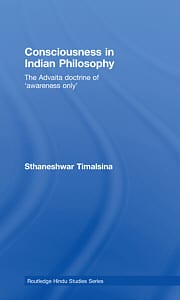
Mark Singleton (ed.), Jean Byrne (ed.)
2008
Today yoga is a thoroughly globalised phenomenon. Yoga has taken the world by storm and is even seeing renewed popularity in India. Both in India and abroad, adults, children and teenagers are practicing yoga in diverse settings; gyms, schools, home, work, yoga studios and temples. The yoga diaspora began well over a hundred years ago and we continue to see new manifestations and uses of Yoga in the modern world.
As the first of its kind this collection draws together cutting edge scholarship in the field, focusing on the theory and practice of yoga in contemporary times. Offering a range of perspectives on yoga’s contemporary manifestations, it maps the movement, development and consolidation of yoga in global settings. The collection features some of the most well-known authors within the field and newer voices. The contributions span a number of disciplines in the humanities, including, anthropology, Philosophy, Studies in Religion and Asian studies, offering a range of entry points to the issues involved in the study of the subject. As such, is of use to those involved in academic scholarship, as well as to the growing number of yoga practitioners who seek a deeper account of the origin and significance of the techniques and traditions they are engaging with. It will also-and perhaps most of all-speak to the growing numbers of ‘scholar-practitioners’ who straddle these two realms.
The book can be purchased here:
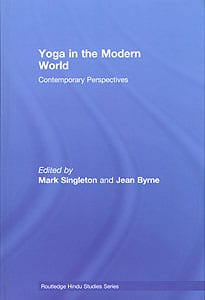
Simon Brodbeck (ed), Brian Black (ed)
2007
The Sanskrit Mahabharata is one of the most important texts to emerge from the Indian cultural tradition. At almost 75,000 verses it is the longest poem in the world, and throughout Indian history it has been hugely influential in shaping gender and social norms. In the context of ancient India, it is the definitive cultural narrative in the construction of masculine, feminine and alternative gender roles.
This book brings together many of the most respected scholars in the field of Mahabharata studies, as well as some of its most promising young scholars. By focusing specifically on gender constructions, some of the most innovative aspects of the Mahabharata are highlighted. Whilst taking account of feminist scholarship, the contributors see the Mahabharata as providing an opportunity to frame discussion of gender in literature not just in terms of the socio-historical roles of men and women. Instead they analyze the text in terms of the wider poetic and philosophical possibilities thrown up by the semiotics of gendering. Consequently, the book bridges a gap in text-critical methodology between the traditional philological approach and more recent trends in gender and literary theory.
Gender and Narrative in the Mahabharata will be appreciated by readers interested in South Asian studies, Hinduism, religious studies and gender studies.
The book can be purchased here:

Ravi M. Gupta
2007
The Chaitanya Vaishnava tradition is famous for its depth of devotion to Krishna, the blue-hued Deity. Chaitanya Vaishnavas are known for having refined the practice and aesthetics of devotion into a sophisticated science. This imposing devotional edifice was constructed upon a solid foundation of philosophical argument and understanding. In this book, Ravi Gupta sheds new light on the contribution of Chaitanya Vaishnavism to the realm of Indian philosophy. He explores the hermeneutical tools employed, the historical resources harnessed, the structure of the arguments made, and the relative success of the endeavor. For most schools of Vaishnavism, the supporting foundation consists of the philosophical resources provided by Vedanta. The Chaitanya tradition is remarkable in its ability to engage in Vedantic discourse and at the same time practice an ecstatic form of devotion to Krishna. The prime architect of this balance was the scholar-devotee Jiva Gosvami (ca. 1517 – 1608). This book analyses Jiva Gosvami’s writing concerning the philosophy of the Vedanta tradition. It concludes that Jiva’s writing crosses ‘disciplinary boundaries’, for he brought into dialogue four powerful streams of classical Hinduism: the various systems of Vedanta, the ecstatic bhakti movements, the Puranic commentarial tradition, and the aesthetic rasa theory of Sanskrit poetics. With training in and commitments to all of these traditions, Jiva Gosvami produced a distinctly Chaitanya Vaishnava system of theology.
The book can be purchased here:

Srilata Raman
2006
Filling the most glaring gap in Shrivaishnava scholarship, this book deals with the history of interpretation of a theological concept of self-surrender-prapatti in late twelfth and thirteenth century religious texts of the Shrivaishnava community of South India. This original study shows that medieval sectarian formation in its theological dimension is a fluid and ambivalent enterprise, where conflict and differentiation are presaged on “sharing”, whether of a common canon, saint or rituals or two languages (Tamil and Sanskrit), or of a “meta-social” arena such as the temple.
Srilata Mueller, a member of the Shrivaishnava community, argues that the core ideas of prapatti in these religious texts reveal the description of a heterogeneous theological concept. Demonstrating that this concept is theologically moulded by the emergence of new literary genres, Mueller puts forward the idea that this original understanding of prapatti is a major contributory cause to the emergence of sectarian divisions among the Shrivaishnavas, which lead to the formation of two sub-sects, the Tenkalai and the Vatakalia, who stand respectively, for the “cat” and “monkey” theological positions.
Making an important contribution to contemporary Indian and Hindu thinking on religion, this text provides a new intellectual history of medieval Indian religion. It will be of particular interest to scholars of Shrivaishnava and also Hindu and Indian religious studies.
The book can be purchased here:

Mikel Burley
2006
Samkhya and Yoga are two of the oldest and most influential systems of classical Indian philosophy. This book provides a thorough analysis of the systems in order to fully understand Indian philosophy. Placing particular emphasis on the metaphysical schema which underlies both concepts, the author adeptly develops a new interpretation of the standard views on Samkhya and Yoga.
Drawing upon existing sources and using insights from both Eastern and Western philosophy and religious practice, this comprehensive interpretation is respectful to the underlying spiritual purpose of the Indian systems. It serves to illuminate the relation between the theoretical and practical dimensions of Samkhya and Yoga. The book fills a gap in current scholarship and will be of interest to those concerned with Indology as well as philosophies in general and their similarities and differences with other traditions.
The book can be purchased here:
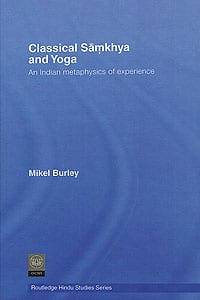
Sanjukta Gupta
2006
In Indian philosophy and theology, the ideology of Vedanta occupies an important position. Hindu religious sects accept the Vedantic soteriology, which believes that there is only one conscious reality, Brahman from which the entire creation, both conscious and non-conscious, emanated.
Madhusudana Sarasvati, who lived in sixteenth century Bengal and wrote in Sanskrit, was the last great thinker among the Indian philosophers of Vedanta. During his time, Hindu sectarians, rejected monistic Vedanta. Although a strict monist, Madhusudana tried to make a synthesis between his monistic philosophy and his theology of emotional love for God.
Sanjukta Gupta provides the only comprehensive study of Madhusudana Sarasvati’s thought. She explores the religious context of his extensive and difficult works, offering invaluable insights into Indian philosophy and theology.
The book can be purchased here:
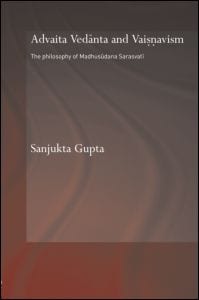
Kenneth Russell Valpey
2006
There is a steady and growing scholarly, as well as popular interest in Hindu religion – especially devotional (bhakti) traditions as forms of spiritual practice and expressions of divine embodiment. Associated with this is the attention to sacred images and their worship. Attending Krishna’s Image extends the discussion on Indian images and their worship, bringing historical and comparative dimensions and considering Krishna worship in the context of modernity, both in India and the West. It focuses on one specific worship tradition, the Chaitanya Vaishnava tradition of the fourteenth to sixteenth centuries, as it develops and sustains itself in two specific locales. By applying the comparative category of ‘religious truth’, the book provides a comprehensive understanding of a living religious tradition. It successfully demonstrates the understanding of devotion as a process of participation with divine embodiment in which worship of Krishna’s image is integral.
The book can be purchased here:
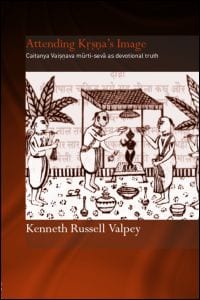
John Taber
2005
This is a translation of the chapter on perception of Kumarilabhatta’s magnum opus, the Slokavarttika, one of the central texts of the Hindu response to the criticism of the logical-epistemological school of Buddhist thought. In an extensive commentary, the author explains the course of the argument from verse to verse and alludes to other theories of classical Indian philosophy and other technical matters. Notes to the translation and commentary go further into the historical and philosophical background of Kumarila’s ideas. The book provides an introduction to the history and the development of Indian epistemology, a synopsis of Kumarila’s work and an analysis of its argument.
The book can be purchased here:
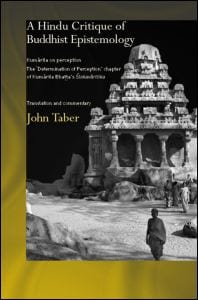
Jacqueline G. Suthren Hirst
2005
Samkara (c.700 CE) has been regarded by many as the most authoritative Hindu thinker of all time. A great Indian Vedantin brahmin, Samkara was primarily a commentator on the sacred texts of the Vedas and a teacher in the Advaitin teaching line. This book provides an introduction to Samkara’s thought which takes this as a central theme. The author develops an innovative approach based on Samkara’s ways of interpreting sacred texts and creatively examines the profound interrelationship between sacred text, content and method in Samkara’s thought. The main focus of the book is on Samkara’s teaching method. This method is, for Samkara, based on the Upanishads’ own; it is to be employed by Advaitin teachers to draw pupils skilfully towards that realisation which is beyond all words. Consequently, this book will be of interest not only to students and scholars of Indian philosophy, but to all those interested in the relation between language and that, which is held to transcend it.
The book can be purchased here:
https://www.routledge.com/Samkaras-Advaita-Vedanta-A-Way-of-Teaching/Hirst/p/book/9780415406017
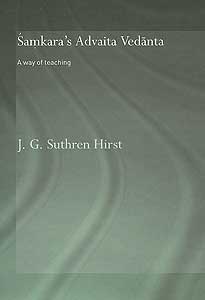
Deepak Sarma
2004
Deepak Sarma explores the degree to which outsiders can understand and interpret the doctrine of the Màdhva school of Vedànta. The school is based on insider epistemology which is so restrictive that few can learn its intricate doctrines. This book reveals the complexity of studying traditions based on insider epistemologies and encourages its audience to ponder both the value and the hazards of granting any outsider the authority and opportunity to derive important insights into a tradition as an insider.
The book can be purchased here:
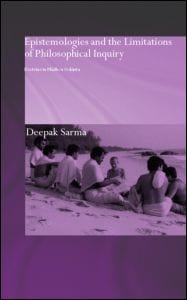
Oxford Centre for Hindu Studies
13 – 15 Magdalen Street, Oxford OX1 3AE.
UK Tel: 01865 304300
Regd Charity No. 1074458